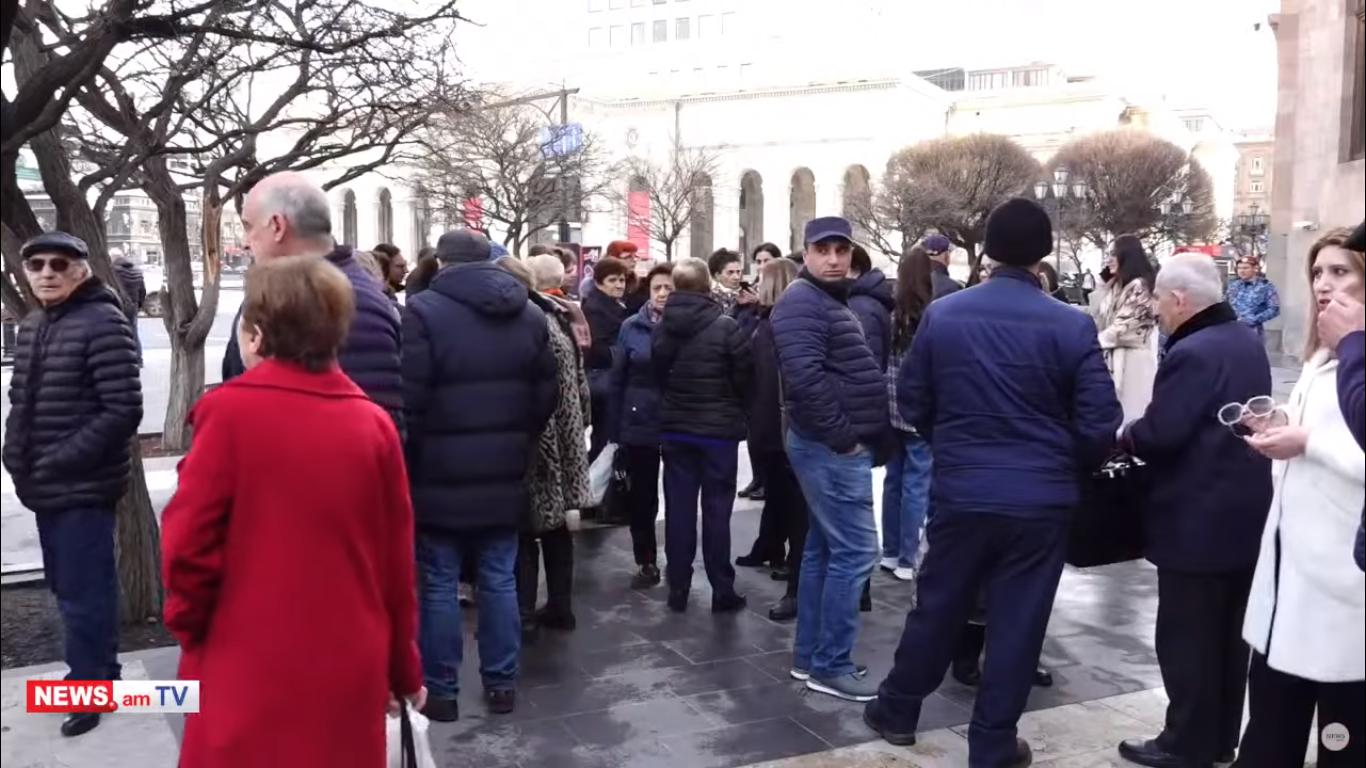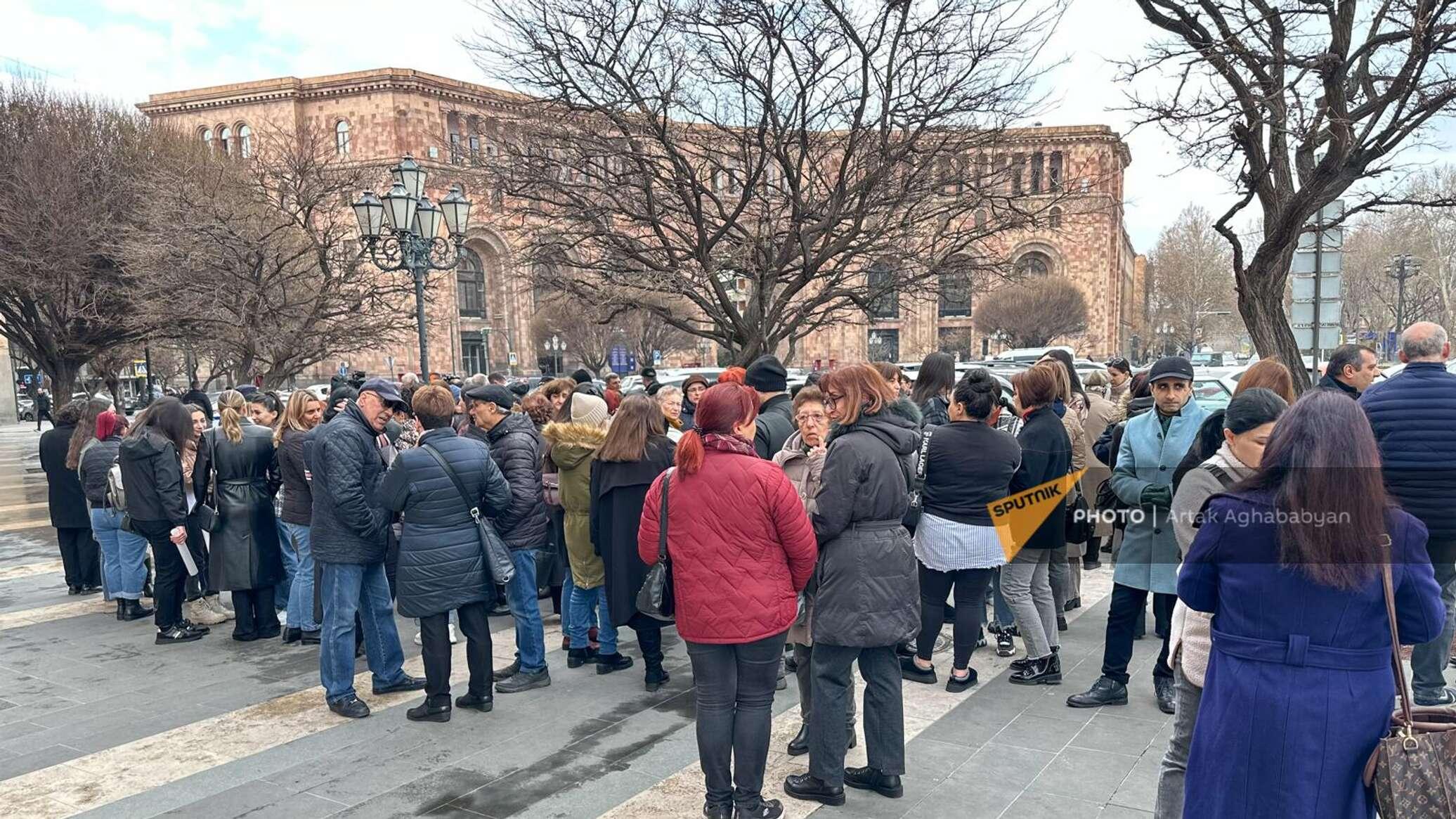Unraveling the dynamics behind Karabakh Armenians' protest in Yerevan Geopolitical showdown in Yerevan
The recent protest in Yerevan's central square by Armenians who renounced Azerbaijani citizenship and departed Karabakh last September has illuminated the intricate interplay of political agendas, regional dynamics, and post-conflict realities.
While ostensibly addressing social issues and the resettlement challenges confronting Karabakh migrants in Armenia, the demonstration revealed underlying political motivations, with some advocating for the collective return of Armenians to Karabakh as a precondition for peace negotiations with Azerbaijan.
Clash over Karabakh return sparks protests & power struggles
The protest, organized by individuals identifying as former "parliamentarians" and "government members" of the defunct separatist regime, underscored the lingering influence of separatist sentiments within Armenia, despite the dismantling of the Karabakh enclave. These individuals, operating in a semi-legal capacity within Armenia, are driven by a desire to capitalize on discontent surrounding the Armenian government's housing program discussions, which proposed financial assistance for Karabakh Armenians contingent upon acquiring Armenian citizenship.

The demand for collective repatriation to Karabakh, articulated by separatist representatives, reflects a broader agenda aimed at perpetuating the "Karabakh issue" on the international stage. Led by figures like former Armenian Foreign Minister Vardan Oskanyan, who has been actively engaging with diaspora leaders and foreign political entities, separatists seek to maintain visibility and relevance by advocating for Armenians' return to Karabakh under international guarantees.
Vardan Oskanyan's active involvement with both Armenian diaspora leaders and foreign political figures regarding the evolving situation concerning the displaced residents of former Karabakh highlights the profound geopolitical implications at play. His engagements signify a deliberate endeavor to garner international backing for the separatist movement. This concerted effort underscores the recognition of the broader strategic significance of the issue and the imperative to rally support on the global stage.
Simultaneously, tensions between the Armenian government and separatists have intensified, exacerbated by the latter's efforts to exploit the disenchantment of Karabakh Armenians for political ends. While the Armenian government has come to terms with the closure of the "Karabakh issue" and the reality of Azerbaijani sovereignty over the region, separatists and their allies in the West continue to agitate, leveraging Karabakh Armenians as a potent protest electorate.
Central to the debate is the question of repatriation and the conditions under which Armenians may return to Karabakh. While some, like separatist Artak Beglaryan, insist on "high international guarantees" and "sovereign status" for Karabakh Armenians, others, such as Gegham Stepanyan, acknowledge the impracticality of such demands but emphasize the importance of keeping repatriation on the international agenda.
However, the feasibility of repatriation remains uncertain, with the international community recognizing Karabakh as a sovereign Azerbaijani territory and the Armenian population having voluntarily left the region in September 2023. Despite this reality, tensions persist, fuelled by opposition forces within Armenia seeking to exploit the plight of Karabakh Armenians to advance their political ambitions.
As Armenia grapples with the legacy of the Nagorno-Karabakh conflict and navigates its post-conflict reality, the fate of Karabakh Armenians remains a poignant reminder of the complexities inherent in post-conflict reconciliation and the enduring challenges of ethnic identity, territorial sovereignty, and regional stability in the South Caucasus.
In the midst of these complexities, the voices of Karabakh Armenians serve as a potent symbol of resilience and determination, shaping the contours of the ongoing discourse surrounding the bogus Karabakh issue and its implications for Armenia's political landscape.
As tensions between the Armenian government and Karabakh separatists escalate, the broader implications for regional stability and the prospects for lasting peace remain uncertain. The challenge for all stakeholders lies in reconciling competing interests and aspirations while addressing the legitimate concerns of displaced populations on both sides of the conflict.
Political turmoil in Yerevan
Amidst the swirling currents of political unrest and societal discontent, the Armenian government, under the leadership of Prime Minister Pashinyan, finds itself at a critical juncture. The recent wave of protests and internal divisions stemming from the Karabakh conflict has placed immense pressure on Pashinyan's administration to delicately navigate a path forward that both addresses the grievances of Karabakh relocants and upholds Armenia's official stance on the conflict. The stakes are high, as any misstep in handling the protests could further destabilize the government and deepen existing political polarization within and outside the country.

One of the most pressing challenges facing the Armenian government is the resurgence of revanchist opposition forces, emboldened by the protests and seeking to exploit the situation for their own political gain. These forces, driven by a desire to continue territorial claims, and fuelled by the discontent of Karabakh Armenians, pose a significant threat to the stability of Armenia's political landscape. Their agenda, which includes leveraging the plight of Armenians who voluntarily left Karabakh to rally support for their cause, has the potential to exacerbate political tensions and sow further discord within Armenian society.
Furthermore, Armenia's engagement with the international community, particularly regarding the Karabakh issue, will play a crucial role in shaping its geopolitical trajectory. The involvement of former Foreign Minister Vardan Oskanyan in diplomatic initiatives underscores Armenia's efforts to garner international support for the separatist cause. However, navigating relationships with key stakeholders such as Russia and Western powers is a delicate balancing act that requires careful diplomacy to avoid escalating regional tensions. Beyond the realm of politics, the ongoing turmoil surrounding former Karabakh residents has far-reaching economic and social implications for Armenia. The uncertainty and instability may also deter the regional situation.
To recap, Armenia finds itself at a crossroads, facing a myriad of challenges that threaten its stability and prosperity. The government's response to the protests, its ability to address underlying grievances, and its engagement with domestic and international stakeholders will be pivotal in determining the country's political trajectory in the coming months and years.
Geopolitical chess: Russia & the West's strategic moves in Armenia
The dynamic between Russia and the West in Armenia can be characterized as a subtle yet significant confrontation, with each side backing different factions within Armenian politics to advance its own interests.
On one hand, Russia has historically maintained close ties with Armenia, primarily through military cooperation and economic partnerships. However, Russia's relationship with Armenia is complex, influenced by regional power dynamics and geopolitical considerations.

In recent times, Russia has shown a willingness to exert its influence in Armenian politics by supporting certain opposition groups that are critical of Prime Minister Pashinyan's government. This backing can be seen as a strategic move by Russia to maintain its influence in the region and ensure a friendly government in power in Yerevan, particularly given Armenia's membership in the Russian-led Collective Security Treaty Organization (CSTO) and its historical reliance on Russian support.
On the other hand, the West, particularly the European Union and the United States, has been supportive of Pashinyan's government, especially following his rise to power in the Velvet Revolution of 2018. The West sees Pashinyan as a proponent of democratic reforms and closer ties with Europe, which align with Western interests in the region. Consequently, Western support for Pashinyan's government can be viewed as a counterbalance to Russian influence in Armenia and a means of promoting Western values and interests in the country.
Conclusion
The competition between Russia and the West for influence in Armenia has created a delicate balancing act for the Armenian government, which must navigate between these competing interests while also addressing domestic concerns and maintaining stability. The backing of certain Armenian opposition groups by Russia, coupled with Western support for Pashinyan's government, has the potential to exacerbate political tensions and deepen divisions within Armenian society. Moreover, this geopolitical confrontation has implications not only for Armenia's internal politics but also for its broader geopolitical orientation and regional stability.
Overall, the Russian-Western confrontation in Armenia underscores the complex interplay of regional powers and their interests in the South Caucasus. The outcome of this competition will not only shape Armenia's domestic politics but also have broader implications for the country's future trajectory and its relations with both Russia and the West.








